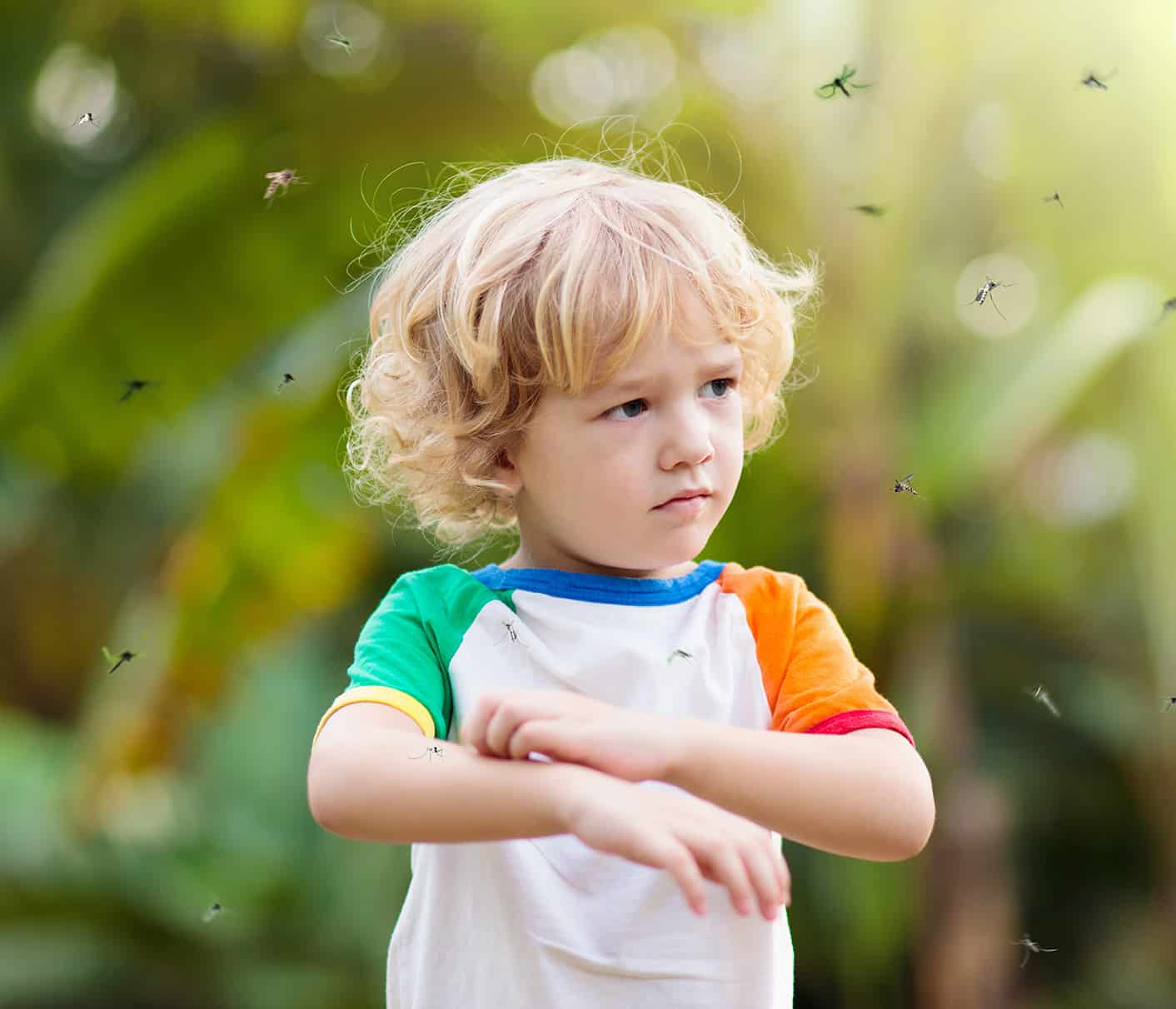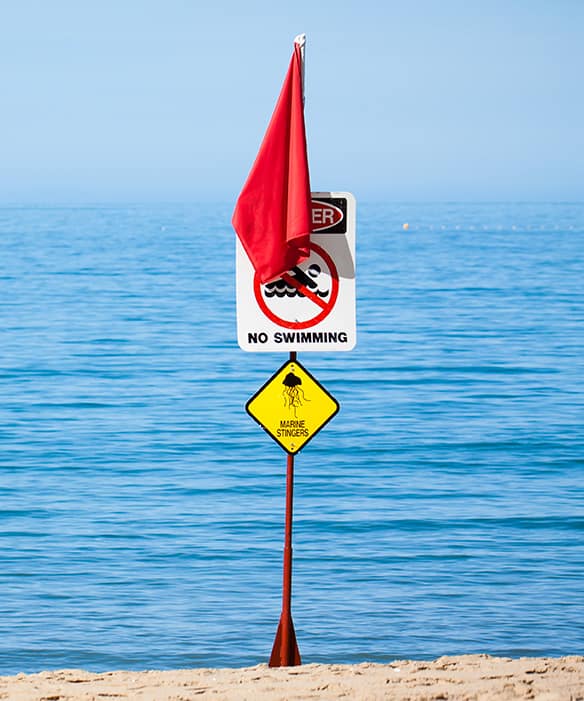As a parent, there are so many things to think about. So, what happens if your little one gets bitten or stung? It can be difficult to know if a bite or sting is dangerous or not, so let’s talk about bites and stings that happen in and around North Queensland.
Insect Bites
Common symptoms of insect bites are skin irritation, inflammation or swelling, and a bump or a blister around the bite mark. Insect bites usually clear up within a couple of days without any treatment.
Mosquitoes can cause itchy bites, but severe allergic reactions are rare. Itching is quite common, and children often scratch, breaking the skin. If the skin breaks, it can lead to an infection. For this reason, if itching persists for more than 48 hours, it is best to take your child to the doctor.
Bees And Wasps can produce a painful sting. However, the major cause for concern is the development of severe allergies, also known as anaphylaxis. If a child shows signs of anaphylaxis, ring 000 immediately and wait for the ambulance. Further steps on how to manage anaphylaxis are discussed below. Wasps rarely leave their sting in the skin, but if a bee’s stinger is left behind, gently remove it by scraping it carefully from the side with a fingernail or credit card, flicking the sting out to reduce the amount of venom injected. Do not use tweezers as you may release more venom from the sac. General first aid steps for bites and stings are outlined below.
Caterpillars can cause painful, itchy, inflamed skin reactions. The fine hairs can cause eye injury if they get into the eye, so see your doctor immediately. Remove visible hairs from the skin with tweezers, then apply and remove adhesive tape to the area to remove the finer hairs. Do not scratch or rub the area as this may cause the hairs to penetrate deeper into the skin.

Snake Bites
Snake Bites can be potentially fatal. Call an ambulance immediately by dialing 000. While not all snakes are venomous, all bites should be treated as potentially dangerous, as identifying snakes is difficult. Apply a pressure-immobilisation bandage immediately, lay the child as still as possible, and wait for the ambulance to arrive. Do not attempt to kill or capture the snake yourself.
Jelly Fish
Box Jelly Fish mostly reside in the warm waters along the North Queensland coast. Their stings are potentially fatal.
Douse the tentacles with vinegar, and then call 000 for an ambulance. If the child isn’t breathing, start cardiopulmonary resuscitation (CPR). Do not attempt to remove the tentacles and do not rub the sting.
Bluebottle Jelly Fish are found in all coastal waters and can be spotted when walking along the beach during summer. The sting can cause immediate intense pain, followed by redness at the site.
Remove any remaining tentacles by washing the area with water. Soaking the affected area in hot but not scalding water (ideally 45 C) for 20 minutes may also relieve the pain. Keep in mind though that this treament is not suitable for infants as hot water can burn their soft skin.
Do not use vinegar. If pain persists, the patient should see their local doctor.
Irukandji Syndrome can be potentially lethal, but most cases are not life-threatening.
The initial sting is usually not felt, but it can develop into a progressive syndrome (over minutes to hours) characterised by restlessness, sweating, nausea, vomiting, and severe pain affecting the limbs, back, abdomen, or chest.
For suspected Irukandji Syndrome, douse the site with vinegar. Ring 000 for an ambulance so your child can attend an Emergency Department for an assessment.

Bats
Bats and Flying Foxes can transmit infections after scratching or biting. If your child is bitten or scratched, wash the area with soap and water for five minutes, apply an antiseptic, and then see your local doctor.
General First Aid For Bites And Stings
- Wash with soap and water and apply an antiseptic
- Ensure your child’s tetanus vaccination is up to date
- An icepack can be applied to reduce local pain and swelling
- Pain relief may be required, this can include paracetamol or an antihistamine (to reduce swelling, redness, or itch)
- See your doctor if your child develops any other symptoms or signs of infection
Anaphylaxis
Signs and symptoms to look out for in children after a bite or sting are:
- Difficult/noisy breathing
- Swelling of tongue
- Swelling/tightness in the throat
- Difficulty talking and/or hoarse voice
- Wheezing or persistent cough
- Persistent dizziness or collapse
- Pale and floppy
- Abdominal pain, vomiting (these are signs of anaphylaxis for insect allergy)

Anaphylaxis is a Medical Emergency. Follow These Steps Immediately:
- Lay the child flat (do not allow them to stand or walk)
- Give an autoinjector (EpiPen or AnaPen) if one is available
- Dial 000 for the ambulance
- If there is no response after 5 minutes, give a second autoinjector
- The child will be transported to the Emergency Department for at least four hours of observation.
- If this is your child’s first anaphylactic event, the ambulance will administer adrenaline on the way to the hospital.
- Commence CPR if the child is unresponsive and not breathing normally.
Resources for further information are available at www.healthdirect.gov.au





